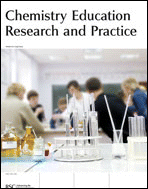Exploring chemistry teacher candidates’ profile characteristics, teaching attitudes and beliefs, and chemistry conceptions
Abstract
The curricula of teacher education need periodic revisions to respond to the evolution of educational objectives. Teachers’ beliefs, as well as their characteristics, teaching attitudes and competency in their subject matter play a decisive role in the success of any reform. In this study, a cross-sectional survey was conducted across years 1-5 of a teacher training program at a university in a metropolitan area in Turkey, seeking to outline prospective chemistry teachers’ profile and understand their teaching beliefs and attitudes toward teaching as a profession. As a second facet, an investigation of prospective teachers’ understanding of fundamental chemistry concepts was conducted, including the concepts of element, compound, the particulate nature of matter and chemical bonding. One hundred and forty chemistry teacher candidates (more women than men) responded to the beliefs and attitudes surveys. Chemistry concept probes were answered by group combinations of first, fourth and fifth year students. The results highlight positive attitudes and intentions of the participants about having teaching as a profession. Final year students appear to hold less traditional teaching beliefs than their year 3 and 4 peers, most likely because of their participation in courses on chemistry methods. Insufficient levels of understanding of fundamental chemistry concepts and common alternative conceptions were uncovered. Suggestions are made in regards to restructuring teacher preparation curricula and courses to allow for confrontation of beliefs and to be more conceptually challenging as well as practice based.
- This article is part of the themed collection: Chemistry Teacher Education – Recent Developments

 Please wait while we load your content...
Please wait while we load your content...